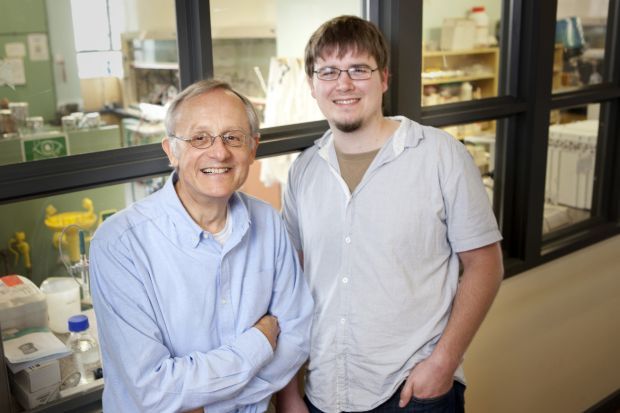
Ian Shaw and Adam Ridden outside the lab (image: University of Canterbury)
Chemicals in the environment with a similar structure to the female hormone estrogen can have feminising effects, such as reduced sperm count and early puberty in girls. University of Canterbury’s Ian Shaw has been studying estrogen mimics, which are part of a larger group of chemicals known as endocrine-disruptors, since 1990. With Adam Ridden, he is now looking at the chemical dibutyl phthalate, which is used as a plasticiser and in pesticides. While dibutyl phthalate does not have a structure similar to estrogen, it appears to cause developmental defects in children of men exposed to large quantities of the chemical.
Ruth Beran finds out how their research into rat cell lines treated with dibutyl phthalate show increased cortisol production, which would lead to reduced testicular cell development, and also explain why testosterone levels may be reduced in the developing foetus if exposed to the chemical.

